How to grow pineapples from seeds. Pineapple or Ananas comosus, according to Kew Botanical Gardens is a delicious tropical fruit with a spiky crown and scaly skin on the outside.
It thrives in sunny, warm climates. You can grow pineapple plants in your home.
It requires patience since pineapples can take 2-3 years to produce fruit. With the right conditions and a green thumb, you can grow a new pineapple.
Table of Contents
How to Grow Pineapple Seeds
Place the seeds in a sealed plastic bag with a moist paper towel to germinate them, which can take up to 6 months. When your seeds have sprouted, they can be planted in small pots and nursed carefully. Once they are large enough, move them outside into direct sunlight so they’ll take root and produce pineapple after 2-3 years.
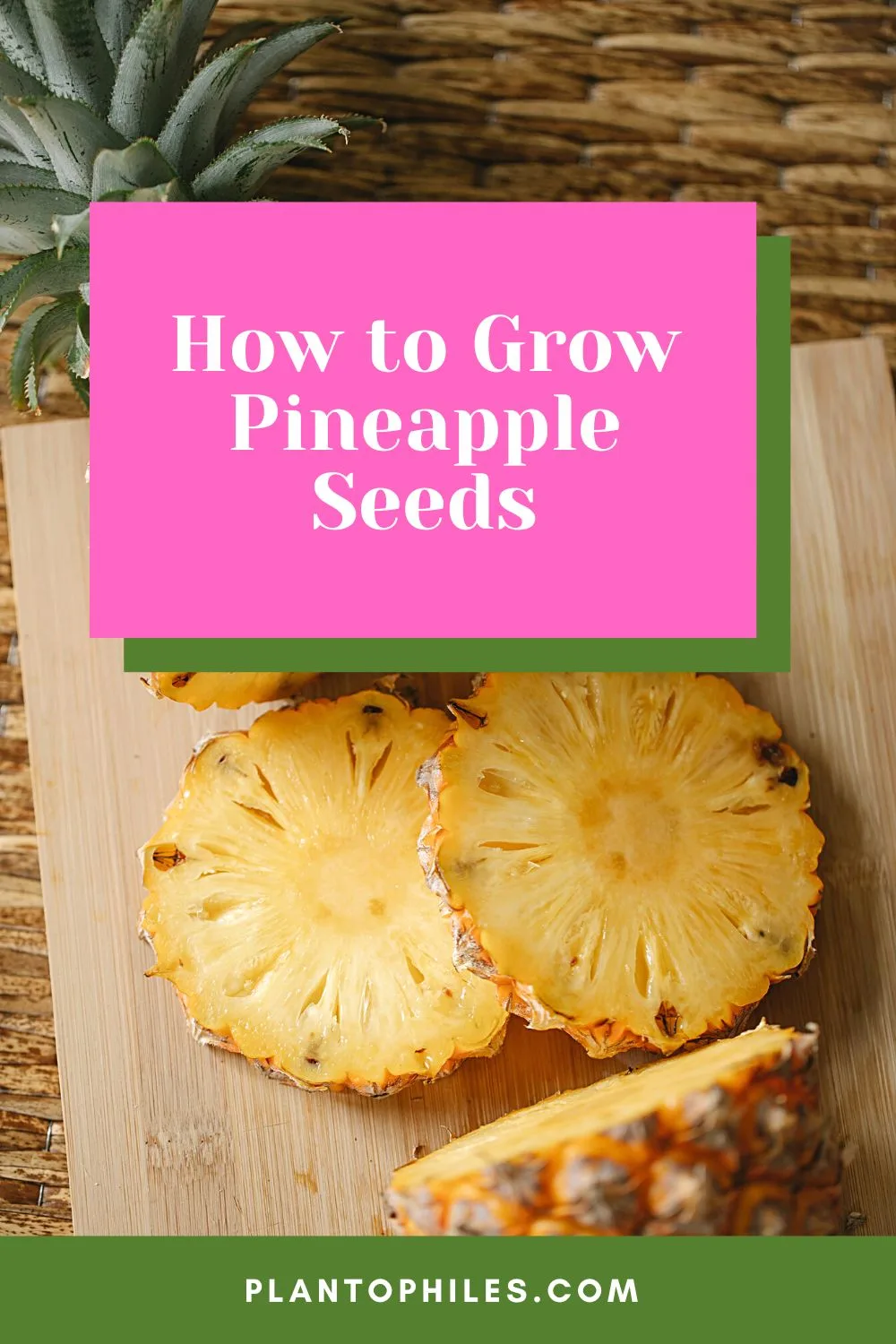
Pineapple Propagation
You can grow pineapples by cutting and rooting the tops.

You can also propagate pineapples from “pups” or suckers. They sprout up from the root systems of mature pineapples.
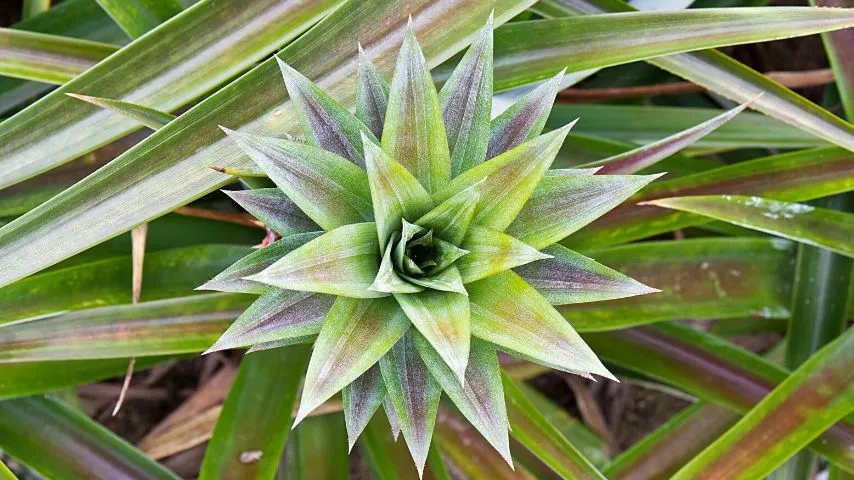
Baby pineapple plants can also be grown from seeds. Sunlight and a warm, humid atmosphere are essential.
Grow Pineapple Plants From Seeds
Pineapple seeds are found on the outer edge of the fruit, less than 1/2″ from the rough exterior.
If you have a wild pineapple, you might be able to collect the seeds, wash them, and plant them.
Most commercially available pineapples don’t contain seeds. If you can’t get seeds from a pineapple, you can find pineapple seeds online.
Fresh pineapple seeds will also germinate best, however.
Learn How to Grow a New Pineapple Plant by Following these Steps
Get the small black seeds ready. Rinse the seeds.
Germinate the seeds before planting by wrapping them in a wet paper towel. Place them inside a plastic bag. Be patient with the germination process. Germinating pineapple takes up to 6 months for seeds to get started.
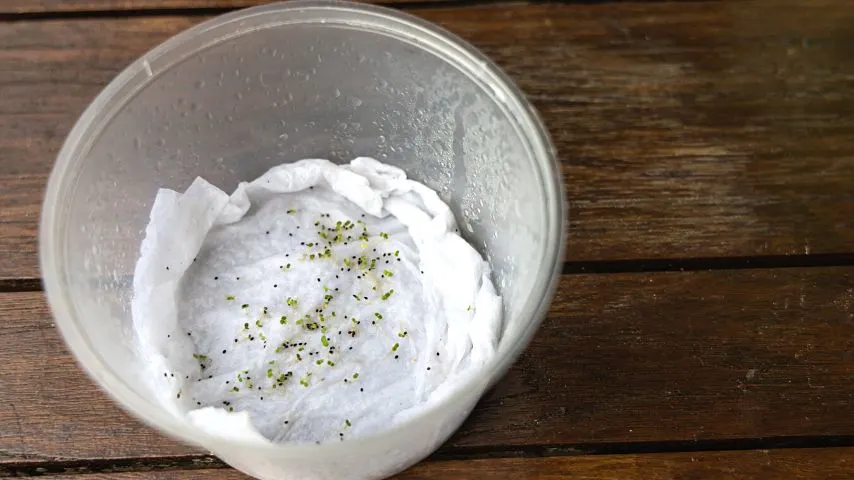
They are hard to germinate.
Make sure to moisten the paper towel periodically so your seeds don’t dry out.
When your seeds have sprouted, carefully transfer them from the paper towel to a pot full of high-quality topsoil.
Dig a small hole for your pineapple sprout, and gently cover it with soil.
You’ll then have a tiny pineapple seedling after a few weeks.
Your pineapple plant still has a long way to go before it produces fruit.
But you are past the most difficult stage.
Once the sapling outgrows its pot, please remove it. Place it into a larger pot by removing the soil. Do it gently without damaging the roots.

As long as you care for your pineapple plant well (and keep it warm), you will have a pineapple growing in no time.
But it will take years to produce the delicious citrus fruit.
How To Care for Young Pineapple Plants
Pineapples make great houseplants. Provide them with ample sunlight and water.
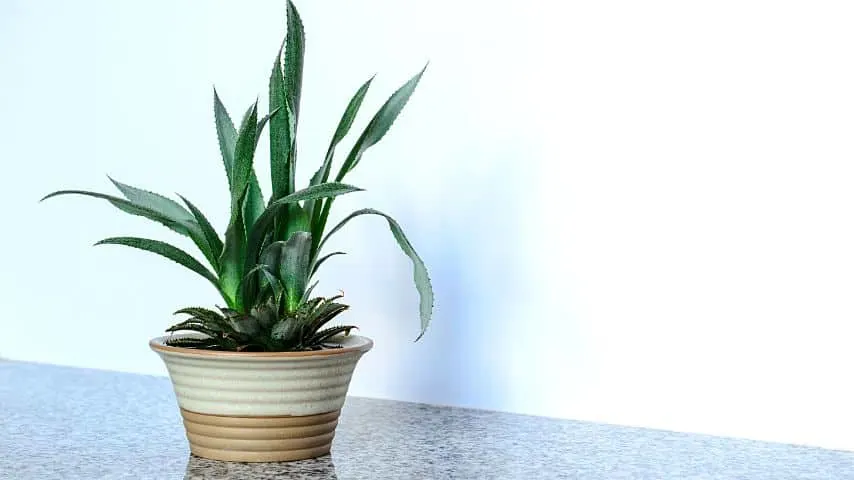
Pineapple doesn’t like to be overwatered and requires excellent drainage. It should be cared for like a cactus, allowing plenty of time for the soil to dry out completely between waterings.
Use a pot filled with potting soil and drainage holes. A potting mix with sandy, loamy soil is ideal.
Pineapple plants need ample sunlight. Bright direct sunlight. A southern-facing window is perfect.
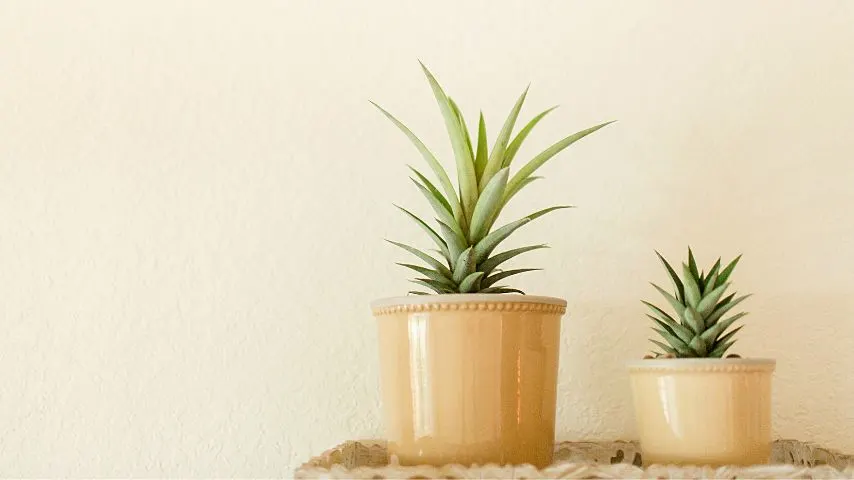
Pineapples also need to be kept in a warm place.
If you live in a borderline or subtropical area, you’ll want to keep your pineapples indoors until they are strong enough to survive on their own. The plant should never get colder than 50°F (10°C).
Pineapples require several years to produce fruit, but they also need a lot of nutrients.
To produce quality pineapples, you’ll need to add liquid fertilizer monthly.
A citrus fertilizer is most suitable for pineapples.
Follow the directions carefully. You want to fertilize regularly.
Avoid over-fertilization. Pineapples are susceptible to leaf burn caused by overfertilization.
Harvesting Your Pineapple
In 2-3 years, the plant will grow substantially.
When it is finished growing vegetatively, it will grow the characteristic pineapple fruit.
When the pineapple’s color shifts from light green to yellow-green, it is ready to harvest. Allow the pineapple to finish ripening indoors after it is cut.
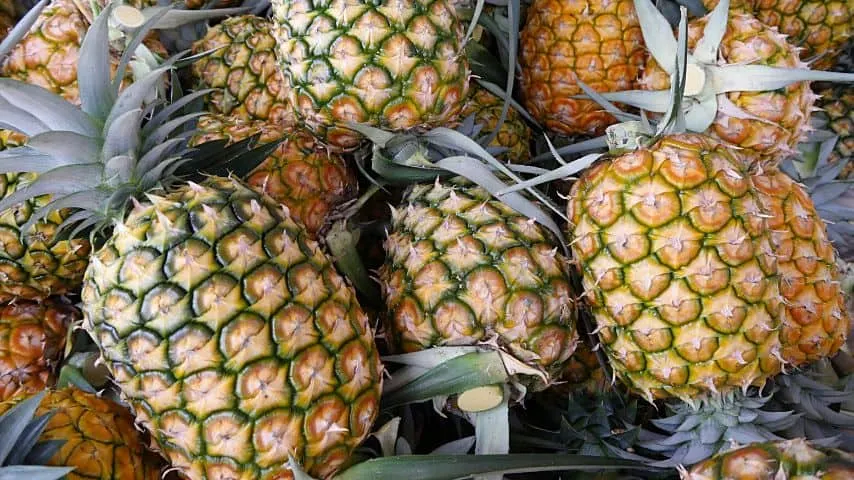
A single pineapple plant will produce fruit a couple of times before it starts to slow down and wear out.
Once that happens, you can start a new pineapple plant from the seed. You can also cut and transplant some of the “pups” that sprout around the plant from its root system.
Frequently Asked Questions about How to Grow Pineapple from Seeds
How Long Does It Take to Grow Pineapple From Seed?
When you are starting from seed, it can take up to six months just for the seed to germinate. After it has grown into a sapling and been planted, it requires several years to grow and produce fruit of its own. Most growers report pineapple flowering and growing fruit anywhere from 24 to 36 months after planting.
How Do Pineapple Seeds Look Like?
Pineapple seeds are very tiny and dark brown. They look like smaller versions of apple seeds or watermelon seeds. In a wild pineapple, you will find the seeds embedded in the yellow flesh close to the exterior. You probably won’t find seeds in most commercially available pineapples as they have been bred not to produce seeds.
Can I Grow a Pineapple Indoors?
Pineapples make great potted plants, and it’s easy to grow a pineapple plant indoors. However, if you are hoping to grow pineapple that will eventually flower and produce fruit, you’ll need a big pot and plenty of space. Pineapple plants need to grow to about 6 feet in diameter and 6 feet tall to produce fruit.
Growing Pineapples From Seed
First, you need to find good-quality seeds. Either you are purchasing them online.
Or you retrieve them from a wild pineapple. Clean them carefully. Germinate the pineapple seeds. It can take up to 6 months.
Wrap the seeds in a moist towel, placing them in an area receiving bright light. Seal them inside a ziplock bag. When your seeds have germinated, plant them in the soil.
They will take root and become saplings. After 2-3 years of steady growth in warm, bright conditions, a mature pineapple plant will start to produce a ripe pineapple.

Daniel has been a plant enthusiast for over 20 years. He owns hundreds of houseplants and prepares for the chili growing seasons yearly with great anticipation. His favorite plants are plant species in the Araceae family, such as Monstera, Philodendron, and Anthurium. He also loves gardening and is growing hot peppers, tomatoes, and many more vegetables.


